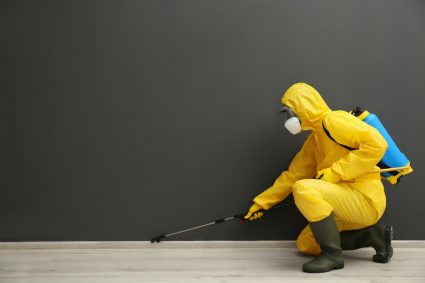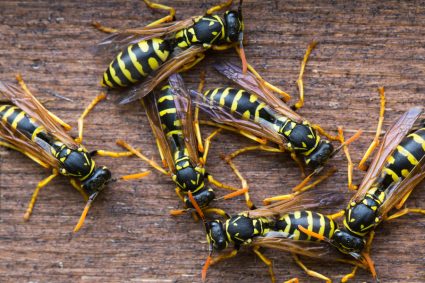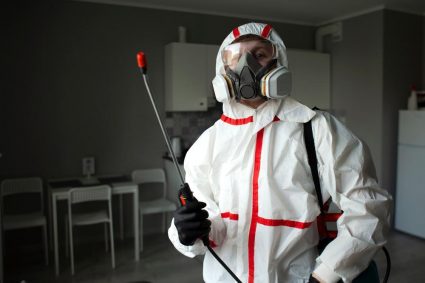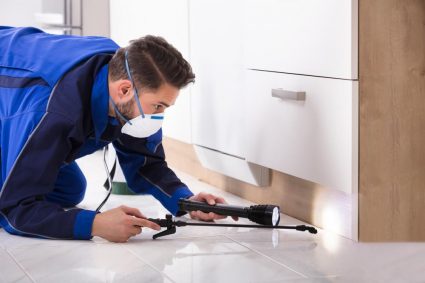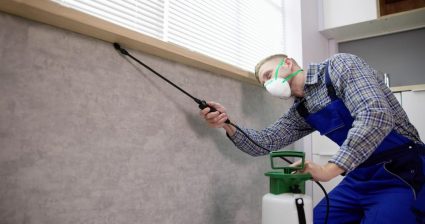
The presence of mold in your home is not just unsightly but can also pose serious health risks, including allergic reactions and respiratory issues. One of the most common questions homeowners ask when dealing with mold is, “Does Clorox kill mold?”
Yes, Clorox can kill mold. Its active ingredient, sodium hypochlorite, is effective in eliminating mold on non-porous surfaces such as tiles, glass, and countertops. However, it’s essential to remember that killing mold is not enough; it must be thoroughly removed to prevent allergic reactions. Additionally, Clorox is not recommended for porous materials or severe mold problems, and other methods or professional help may be required in these cases.
What is Clorox?
Clorox is a brand known for its cleaning and disinfecting products. Clorox® Disinfecting Bleach, for instance, contains sodium hypochlorite as its active ingredient, which is effective in killing various types of mold on non-porous surfaces such as tiles, bathtubs, glass, and countertops. Other Clorox products like Tilex® Mold & Mildew Remover or Clorox® Clean-Up® are also designed for mold removal.
Efficacy of Clorox in Killing Mold
Clorox, with its active ingredient of chlorine bleach, is effective at killing mold on hard, non-porous surfaces such as floors, counters, sinks, and stoves. However, it is not recommended by the Environmental Protection Agency (EPA) as a routine practice during mold cleanup, as there may be instances when professional judgment may indicate its use.
A study funded by The Clorox Company found that low concentrations of chlorine bleach were effective at killing mold spores and neutralizing surface allergens. However, it is crucial to remember that dead mold can still cause allergic reactions in some people, so it is not enough to simply kill the mold; it must also be removed.
How to Properly Use Clorox to Kill Mold
To kill mold effectively using Clorox, follow these steps:
- Ventilate the area: Open windows to allow fresh air to circulate.
- Pre-clean the surface: If the mold is heavy, wipe away as much as you can before applying the bleach solution.
- Mix the bleach solution: Use Clorox® Disinfecting Bleach to create a mold-killing solution.
- Apply the solution: Use a sponge or brush to apply the bleach solution to the moldy area. Cover the entire affected surface.
- Wait: Allow the bleach solution to sit on the mold for around 10 minutes.
- Rinse: After the contact time has passed, rinse the area thoroughly with water to remove the bleach solution and any remaining mold.
- Dry: Allow the surface to air dry completely to prevent mold regrowth.
Risks and Dangers of Using Clorox to Kill Mold
While Clorox can effectively kill mold, it’s important to be aware of potential risks. Prolonged exposure to bleach can be harmful to humans, causing irritation to the eyes, mouth, lungs, and skin. Moreover, mixing bleach with other cleaning solutions containing ammonia can produce toxic fumes.
Preventing Future Mold Growth
While Clorox can help remove mold from surfaces, it may not be the most effective solution for preventing future mold growth. The key to preventing mold is addressing the source of moisture that allowed mold growth in the first place.
Clorox vs. Other Mold-Killing Products
While Clorox is a popular choice for mold removal, there are alternative products on the market that cater to different situations or preferences. For example, Benefect Botanical Decon 30 Disinfectant Cleaner is a plant-based, gentle formula that does not contain strong chemical agents like ammonium.
In summary, Clorox is an effective mold-killing product for non-porous surfaces. However, it’s essential to address the root cause of the mold issue and consider alternative methods or professional help for porous materials or severe mold problems.
Frequently Asked Questions
Can I use Clorox on porous surfaces like wood to kill mold?
No, Clorox and other bleach-based products are not recommended for use on porous surfaces like wood. While they may kill the surface mold, they are unable to penetrate the material and kill the mold roots, allowing the mold to regrow.
What is the correct ratio of Clorox® Disinfecting Bleach to water for a mold-killing solution?
According to Clorox’s guidelines, you should use 3/4 cup of Clorox® Disinfecting Bleach per gallon of water for mold and mildew remediation.
Can Clorox® Disinfecting Wipes be used to kill and remove mold?
While Clorox® Disinfecting Wipes are effective against many bacteria and viruses, they are not specifically designed to kill and remove mold. For mold treatment, products like Clorox® Disinfecting Bleach or Tilex® Mold & Mildew Remover are more suitable.
Can I use Clorox to kill black mold?
Yes, Clorox can effectively kill black mold on non-porous surfaces. However, black mold (Stachybotrys chartarum) can be particularly dangerous and it’s often recommended to seek professional help for its removal.
What should I do if I accidentally mix Clorox with an ammonia-based cleaner?
If you accidentally mix Clorox bleach with an ammonia-based cleaner, it can produce toxic fumes. Immediately ventilate the area and move to fresh air. Avoid inhaling the fumes and seek medical attention if you feel unwell.

